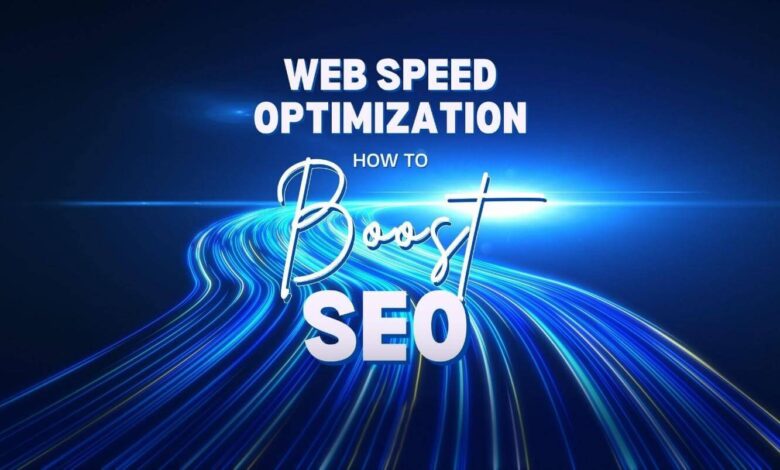Website Speed Optimization: How to Boost Performance for SEO

In today’s digital age, where websites are the virtual doorways to businesses and the portals to a vast sea of information, speed is not merely a virtue; it’s an absolute necessity.
Welcome to the realm of website speed optimization, an essential practice that accelerates your website’s loading time and significantly influences user interactions and search engine rankings.
Whether you’re managing a small business website, embarking on the journey of online research, or are a seasoned SEO expert navigating the ever-shifting trends of digital marketing trends, maximizing the power of website speed optimization is paramount.
A Matter of Seconds: The Crucial Role of Website Speed
Imagine this scenario: a user researches for information or products, eagerly clicking a link to your website. However, as they wait for an eternity for the webpage to load, frustration simmers, and the “back” button beckons.
This situation shows how important website speed is. If your website lags, you lose traffic and even potential sales.
Website speed optimization is the key to avoiding these kinds of problems. It’s both a science and an art that focuses on making your website load faster so that people looking for content and resources have a smooth and quick experience online.
Still, it’s not just about making visitors happy; it’s also about pleasing the algorithms that decide what happens to a website in the highly competitive world of search engine results.
Speed and Beyond: The Multi-Faceted Impact
Beyond the obvious benefits of a faster website, the effects of website speed optimization can be felt in many ways:
-
Improved Mobile Experience
Mobile devices are everywhere now, so it’s important to cater to a mobile crowd. Website speed optimization makes sure that your site loads quickly and well on smartphones and tablets. This is especially important if you want to reach your target audience who mostly use their mobile devices to access information online.
-
Enhanced Accessibility
Speed is not only a matter of user convenience but also accessibility. It makes your website more inclusive by allowing those with slower internet connections or disabilities to access your content without unnecessary hindrances.
This consideration can greatly expand your audience reach, including those with special needs or in regions with limited internet infrastructure.
-
Increased Mobile Search Rankings
With the surge in mobile device usage for online activities, search engines have placed a higher emphasis on mobile-friendliness and speed. Websites that load swiftly on mobile devices are more likely to receive a boost in mobile search rankings.
This is especially crucial for businesses targeting local audiences who largely access information on their smartphones.
-
Lower Bounce Rates
Website Speed Optimization directly contributes to reducing bounce rates, which is the percentage of visitors who leave a website after viewing only one page.
When your site loads quickly, it captivates the attention of users and encourages them to explore further. Lower bounce rates not only improve the user experience but also signal to search engines that your content is engaging and relevant.
-
Improved Conversion Rates
For businesses and e-commerce websites, the impact of website speed optimization extends to the bottom line. Speedy websites not only attract more visitors but also convert more of them into customers.
A faster website instills confidence in users, making them more likely to complete transactions, sign up for newsletters, or engage with your content. This boost in conversion rates can be a game-changer for businesses seeking to maximize their online presence.
Including these additional effects of website speed optimization will provide a more comprehensive picture of its benefits and appeal to a broader audience of readers.
Strategies to Accelerate Your Website
Now that we’ve established the critical importance of website speed, let’s dive deeper into practical strategies that will empower you to rev up your website’s performance and responsiveness:
-
Image Optimization: The Weight of Visual Content
Images can be captivating and informative but can also weigh down your website’s loading speed. Use image optimization techniques to strike a balance.
Reduce image file sizes without compromising quality using tools like Adobe Photoshop or online compressors like TinyPNG. This ensures a faster, image-rich web experience and caters to a diverse audience, including students seeking visual content.
-
Minify CSS and JavaScript: Streamlining the Code
In the realm of website speed, every millisecond counts. Optimize your CSS and JavaScript files by eliminating unnecessary spaces, line breaks, and comments.
This meticulous approach significantly reduces load times, catering to impatient high school students seeking quick answers and web and SEO experts demanding a professionally streamlined web environment.
-
Utilize Browser Caching: Serving Repeat Visitors
Web caching is a lifesaver both for big and small business websites. Caching stores frequently accessed resources on a visitor’s device, reducing the need to reload them each visit.
This advantage is particularly pronounced for websites with dynamic content. Implement browser caching through your web server or leverage plugins if you’re operating on content management systems like WordPress SEO Plugin.
-
Performance Monitoring: Continual Improvement and SEO Benefits
Website speed optimization is not a one-and-done endeavor; it’s an ongoing commitment to excellence. As you implement these strategies, it’s crucial to monitor your site’s performance and make data-driven adjustments consistently. Here are additional points to consider:
-
Content Delivery Networks (CDNs): A Global Reach
For websites catering to a diverse audience, including students and SEO experts worldwide, Content Delivery Networks (CDNs) are indispensable.
CDNs distribute your content across multiple strategically placed servers worldwide, ensuring swift delivery to users regardless of location. This global reach caters to your diverse audience in the digital landscape.
-
User Behavior Analysis: Tailoring the Experience
Understanding user behavior is vital for optimizing website speed. Tools like heatmaps, session recordings, and user flow analysis provide insights into how users interact with your site.
By tracking clicks, scroll patterns, and navigation routes, you can fine-tune your website’s layout and content for both high school students and college-level audiences.
Conclusion
Website speed optimization is still an important part of SEO and web performance in a digital world that is always changing. SEO experts can do a better job if they understand how speed affects how users interact with a site and how well it ranks on search engines.
By using the strategies in this complete guide and having a mindset of continuous improvement, you’ll be able to improve your website’s performance and achieve SEO excellence in an online world that is becoming more and more competitive.





